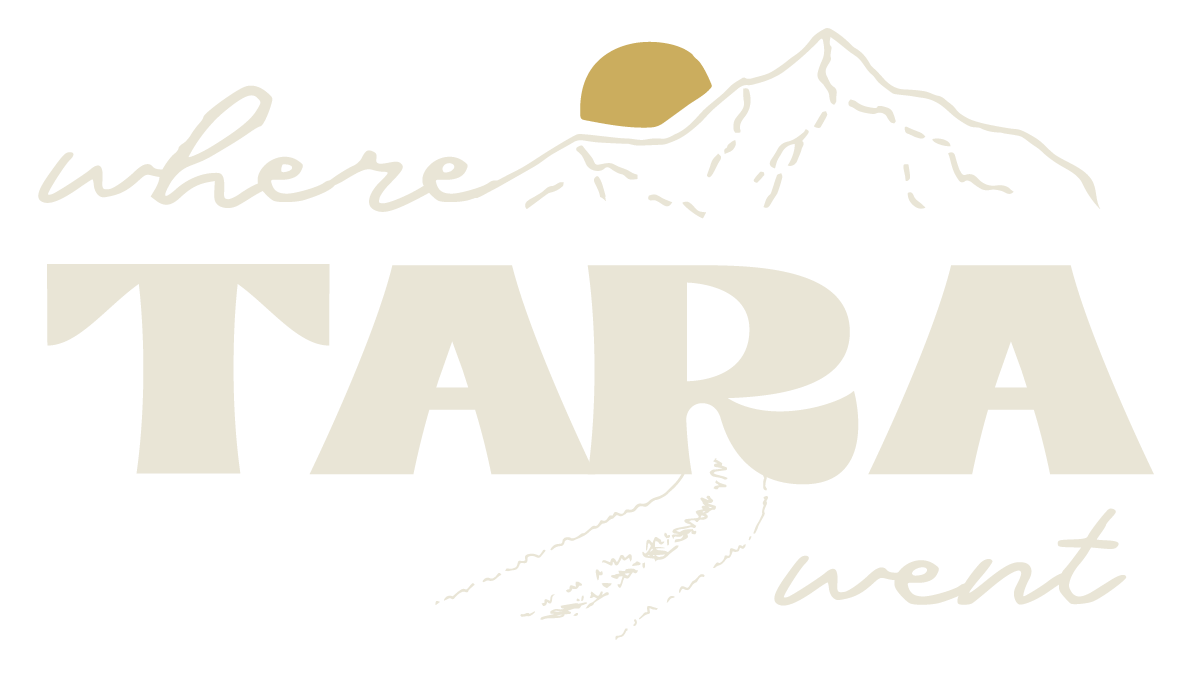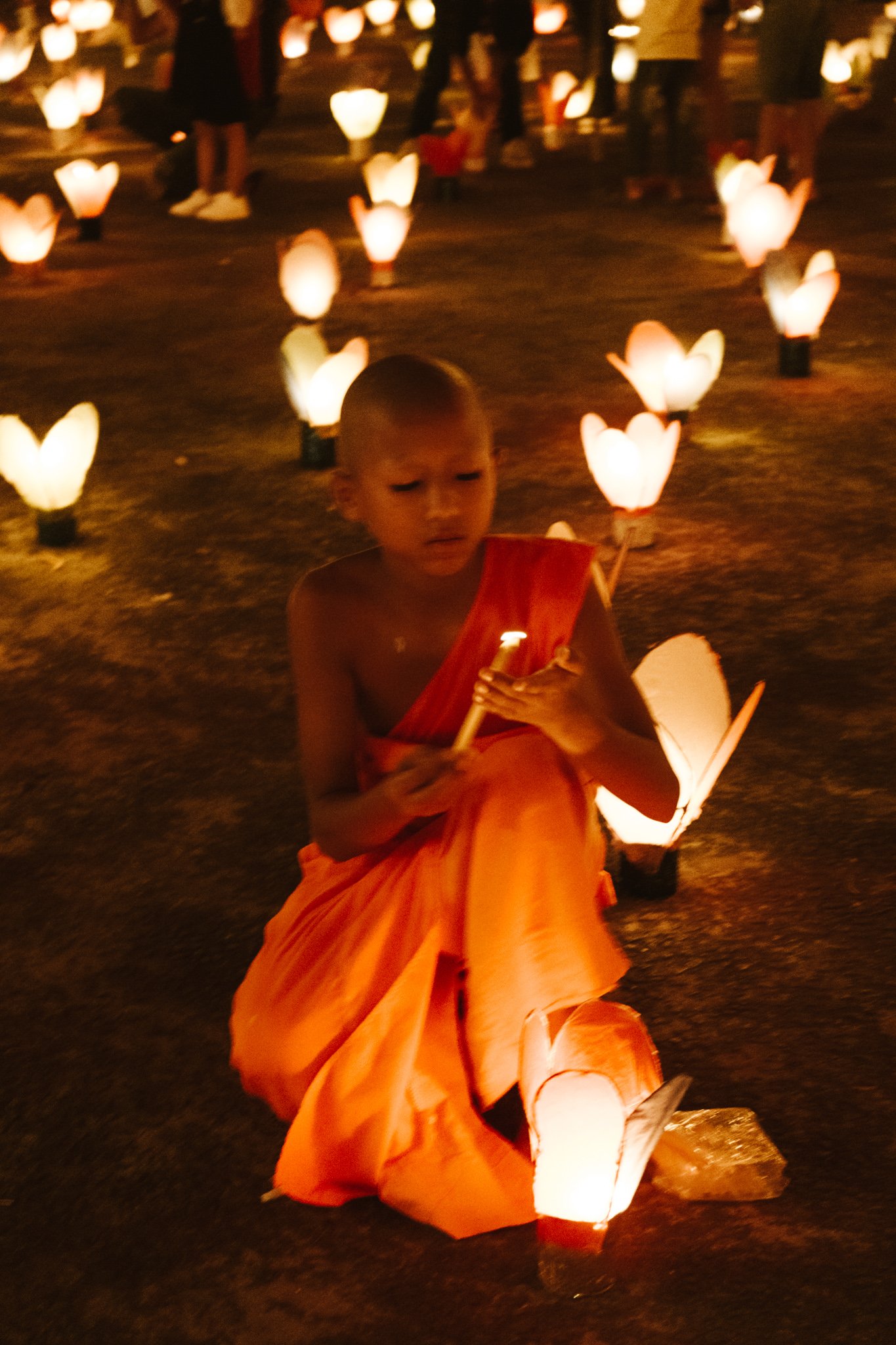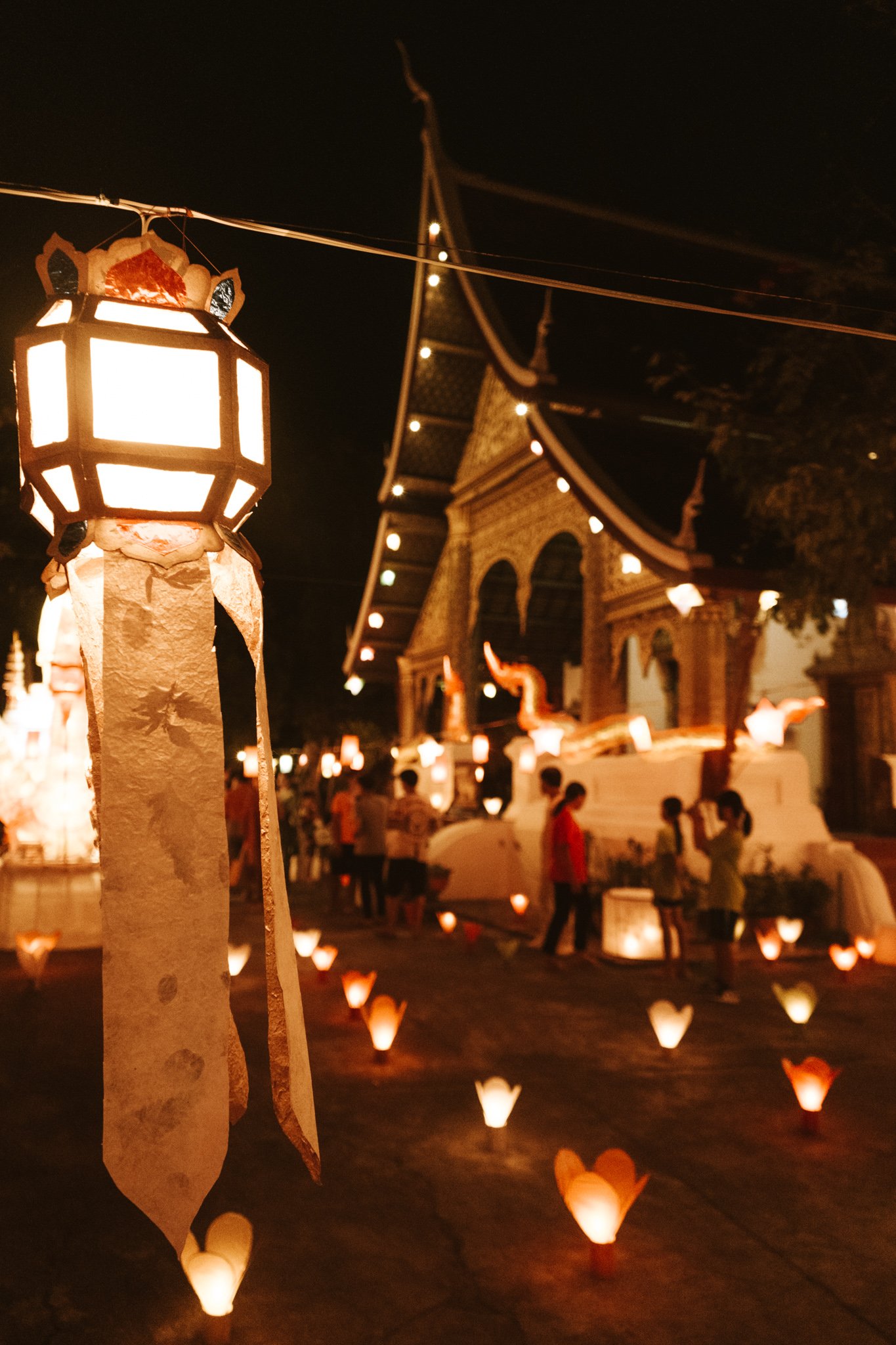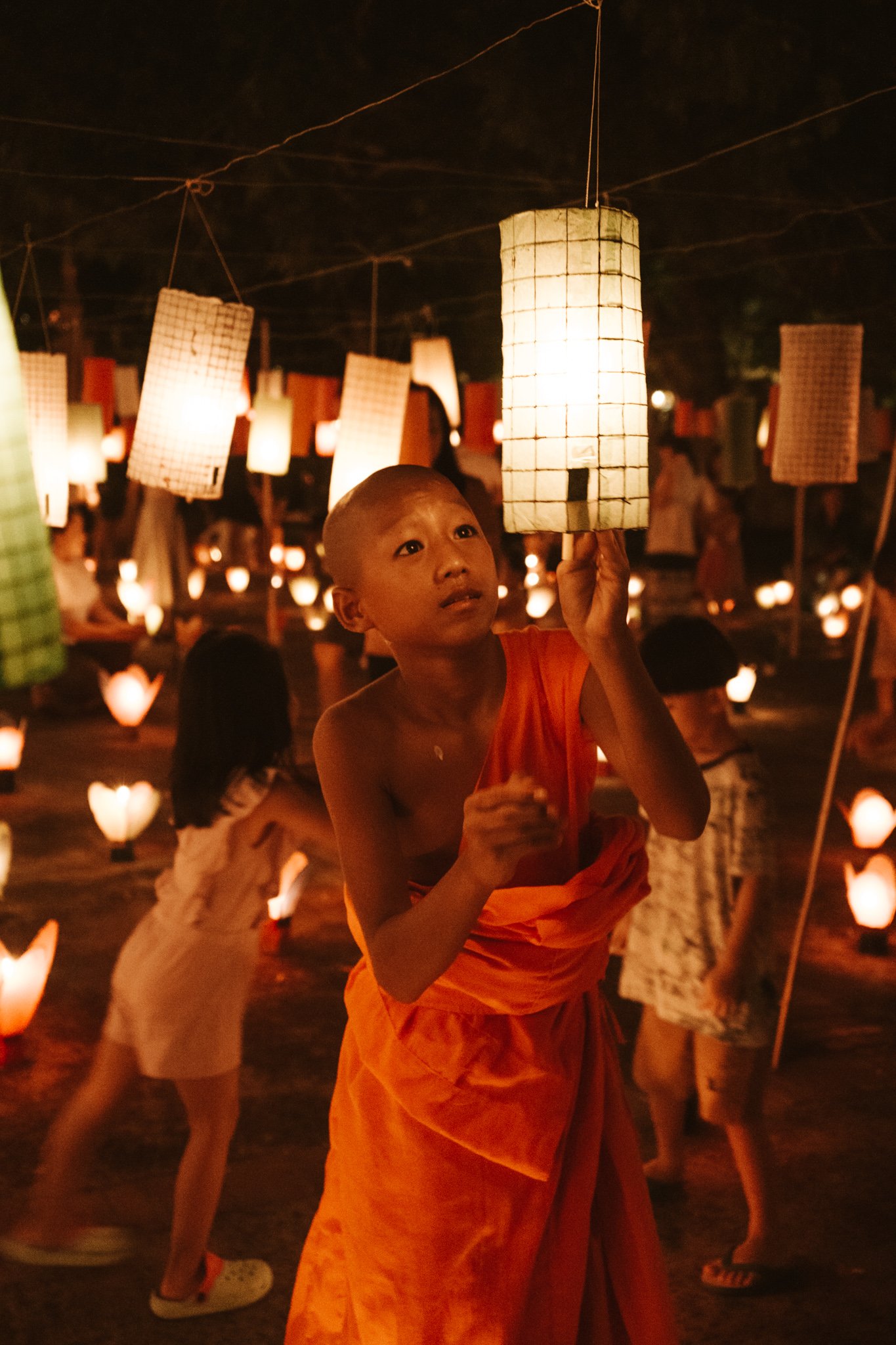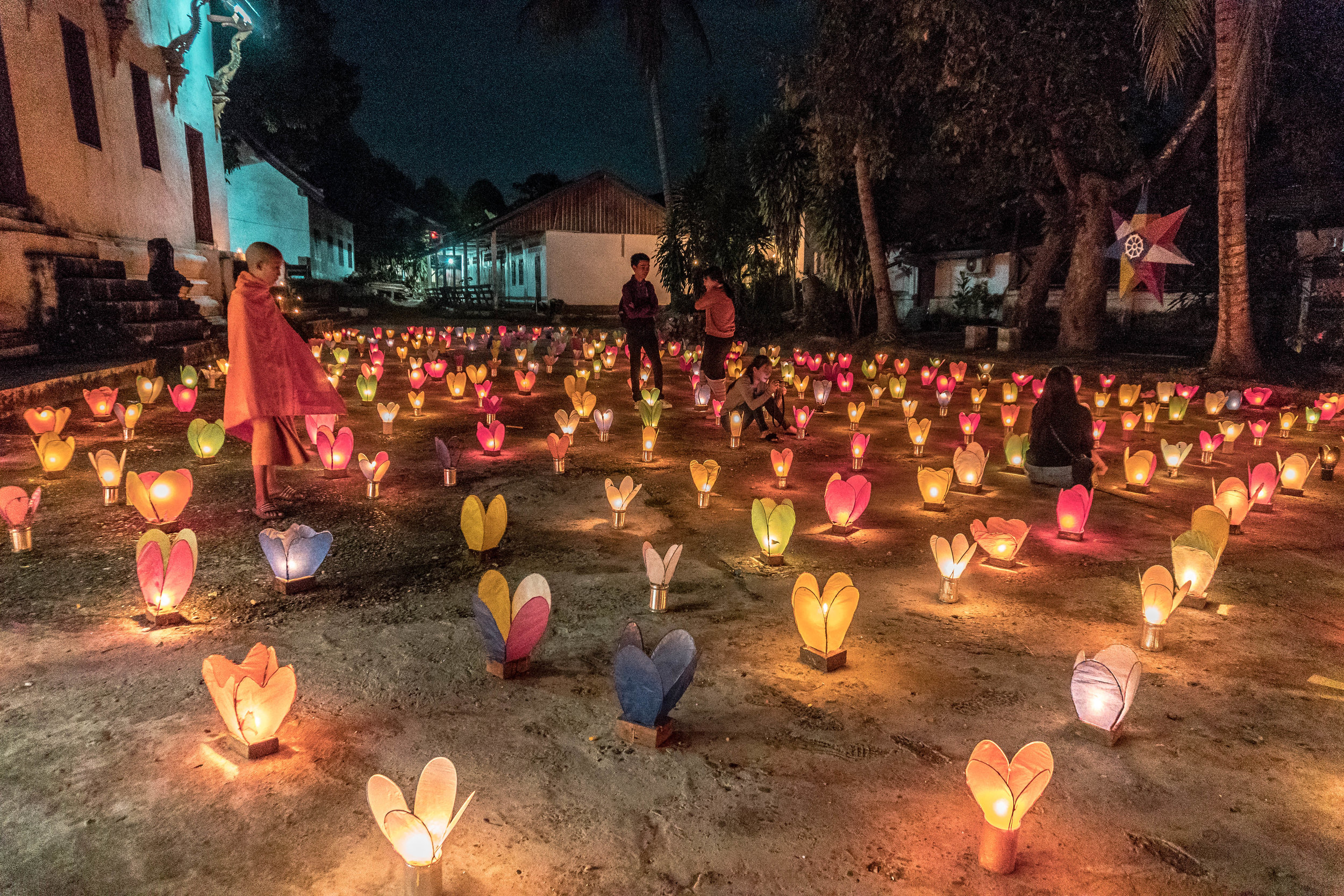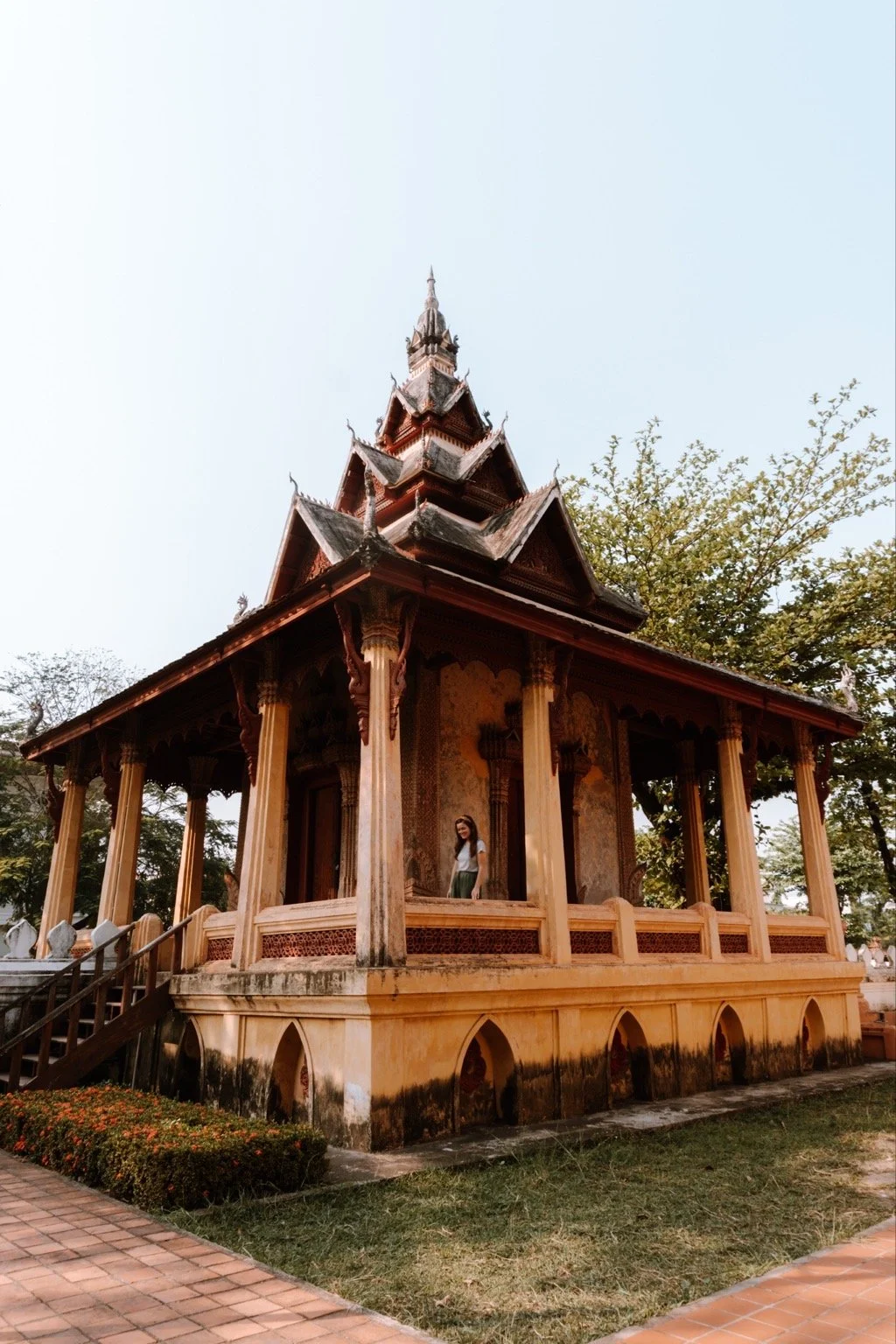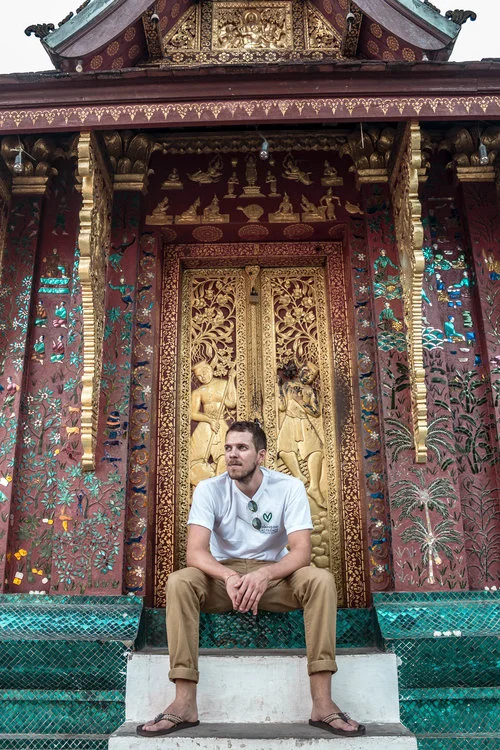How to Celebrate the Festival of Light in Luang Prabang, Laos
The Festival of Lights in Luang Prabang is a magical time for visitors, but what actually is the Festival of Light? And when is it? All that vital information and more can be found in this comprehensive guide.
As a Luang Prabang expat, I often get asked when the best time of year to visit Laos is, and without hesitation, my answer is always “October.” Every October, the little UNESCO town of Luang Prabang lights up for the Festival of Light, Lai Heua Fai, in celebration of Awk Phansa, the end of Buddhist Lent. Commonly called the “Candlelight Festival”, the city becomes impossibly beautiful, illuminated by wax candles melting onto pagodas and crepe paper lanterns hanging from temple roofs and the windows of local homes.
For many travelers, there is a lot that doesn’t quite get translated. Why is there a parade of dragons floats? What are those things with the flowers on them? Why are all the Monks and Novices completely bald, eyebrows and all? I’m here to answer all those questions and give the full scoop on my absolute favorite festival in Laos: the Festival of Lights.
when is the festival of light ↴
The Festival of Light, sometimes referred to as “Candlelight Festival” takes place every year at the end of Awk Phansa, which lands on the first full moon of the 11th month of the Lunar calendar. Typically, this is the first or second week of October. The week leading up to Boun Awk Phansa is filled with events around Luang Prabang that include krathong making, traditional fashion shows, and handicraft markets.
what is boun Awk Phansa ↴
Buddhism varies widely from place to place, as do the stories people retell. Boun Awk Phansa marks the end of Buddhist Lent; the three lunar months of Buddhist Lent. Buddhist Lent begins on the full moon in July and ends on the full moon in October with Boun Awk Phansa. In observation of Buddhist Lent, strict rules are enforced in Laos that prohibit Monks and Novices from staying away from their temple overnight (or after sunset). They are also not allowed to disrobe during this period.
The story goes that during Buddha’s pilgrimage, when he had thousands of followers, he recognized that wherever they went they ruined any of the crops they had walked on. So to give the crops a chance to grow back, Buddha declared that his followers were not allowed to leave their temple during Awk Phansa.
In Laos, particularly in Luang Prabang, the end of Buddhist Lent is celebrated with rituals that have been carried out by locals for thousands of years, including the making of krathongs and floating them down the Mekong, giving morning alms and offerings to local temples, and the parade of nagas.
what is Lai Heua Fai ↴
Lai Huea Fai, also referred to as Candlelight Festival or Festival of Light, is the festival that takes place to celebrate Boun Awk Phansa (the end of Buddhist Lent). Like other festivals in Laos, it blends together Animist and Buddhist traditions. It is believed that the ceremony originated as a way to pay homage to the river deities and their spirits.
Today, small 'boats of light' are floated down the river to signify letting go of any immoral thoughts and actions, such as greed and anger, over the past year. These small boats known, as 'krathongs', are made from a banana tree trunk, acting as a base, and decorated with various flowers and candles. At the water's edge, wishes are murmured before they are let go to float down the river.
There is a parade of naga floats made from crepe paper and bamboo. Each Ban (village) designs its own intricate naga that gets paraded through the center of town and floated down the Mekong. There are often cultural events that take place across the town in the week leading up to Lai Heua Fai, so keep an eye out on Facebook and signs around Luang Prabang.
what are Krathongs ↴
what is a krathong
A krathong is traditionally a piece of banana trunk, wrapped decoratively in flowers and banana leaves and topped with a wax candle and incense, that you release into a body of water.
INSIDER TIP: It’s believed that if you and your lover float your krathongs down the river and they float together, you will return to one another in the next life! Many couples “cheat the system” and pin their krathongs together so as to not risk it.
where to buy a krathong
You can buy krathongs at street stalls around town— there are so many of them you literally could not miss them even if you tried. Small krathongs sell for 15,00-30,000 LAK, while the large ones can sell for upwards of 150,000 LAK.
where to make your own krathong in Luang Prabang
Alternatively, you can make your own krathong. The Luang Prabang Library typically supplies fresh marigolds, incense, candles, banana leaves, scissors, toothpicks, and sliced banana trunk to the public so that everyone can make krathongs together free of charge (donations are encouraged). Other handicraft businesses in Luang Prabang offer a version of this for a fee. I recommend Ock Pop Tok’s krathong workshop at their Living Craft Center.
where to release your krathong
You can pay to take a Mekong River Cruise and float your krathong from the boat, however, boats book up fast. This is also the more pricey option. However, for no money at all, you can release your krathongs from multiple river entry points by braving the steep staircases around the peninsula. Walk down the steps, meditate on your krathong, and send it off into the water with good wishes and happy thoughts.
where to see the lights ↴
You’ll see lanterns and lights all around town, but there are a few specific places where the lights of the festival are extra spectacular.
Temples are open to the public and even the few that usually have an entry cost, like Wat Xieng Thong, are free so that visitors can come and look at the lights and lanterns. Some of my favourite lesser-known temples include Wat Siphoutbath, Wat Aphay, Wat Visounnarath, Wat Aham, and Wat Manorom.
CODE OF CONDUCT: Please, for the love. of all that is holy, dress appropriately! Foreigners come to visit Luang Prabang wanting photos of the beautiful temples and they walk right in without regard for covering their shoulders or knees. Your Instagram grid and comfort does not trump cultural preservation. It’s hot, it’s crowded, and it might not be super cute— regardless, it’s culture. And part of the privilege of traveling around the world is embracing what, at times, might not be comfortable.
releasing the lanterns ↴
Releasing lanterns isn’t inherently a part of the tradition of the festival in Laos, which is nice given the negative environmental impact of the “floating lanterns”. While there is no doubt the lanterns are a truly gorgeous sight to take in, it’s also nice for the focus to be on the krathongs lighting up the rivers, the Nagas lighting up the streets, and the handmade lanterns lighting up the temples.
